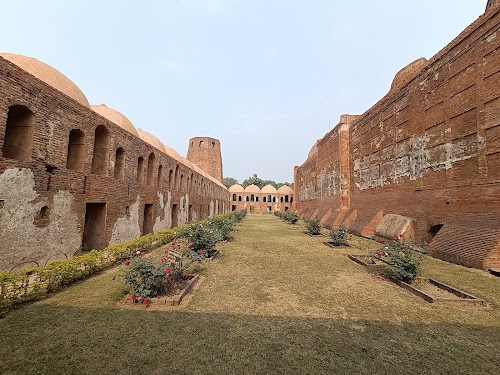
Katra Masjid
Murshidabad, India
- Climb the towers for panoramic views.
- Explore the mosque's architecture and ruins.
- Learn about the history of Murshidabad.
- Visit the tomb of Nawab Murshid Quli Khan.
Known for:
Description:
Katra Masjid, also known as Katra Mosque, is a significant historical and architectural landmark in Murshidabad. It stands as a testament to the grandeur of the 18th-century Bengal Subah. The mosque complex includes the tomb of Nawab Murshid Quli Khan, who commissioned its construction. The structure is characterized by its imposing size, with massive corner towers and a large courtyard. Although partially damaged, it still attracts tourists with its historical importance and architectural style, reflecting a blend of Persian and Bengali influences. Visitors can explore the ruins, climb the towers for panoramic views, and learn about the life and times of Nawab Murshid Quli Khan.
History:
Katra Masjid was commissioned by Nawab Murshid Quli Khan in the early 18th century (completed in 1724). The Nawab intended it not only as a mosque but also as his final resting place. He is buried beneath the staircase leading to the mosque, as he wished to be trodden upon by those who came to pray. The mosque originally had five domes, but they were destroyed by an earthquake in 1897. It served as an important center for Islamic learning and religious activities. Over time, it suffered damage and neglect but remains a powerful symbol of Murshidabad's rich history and the Nawab's legacy.